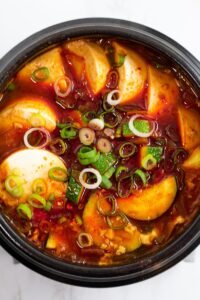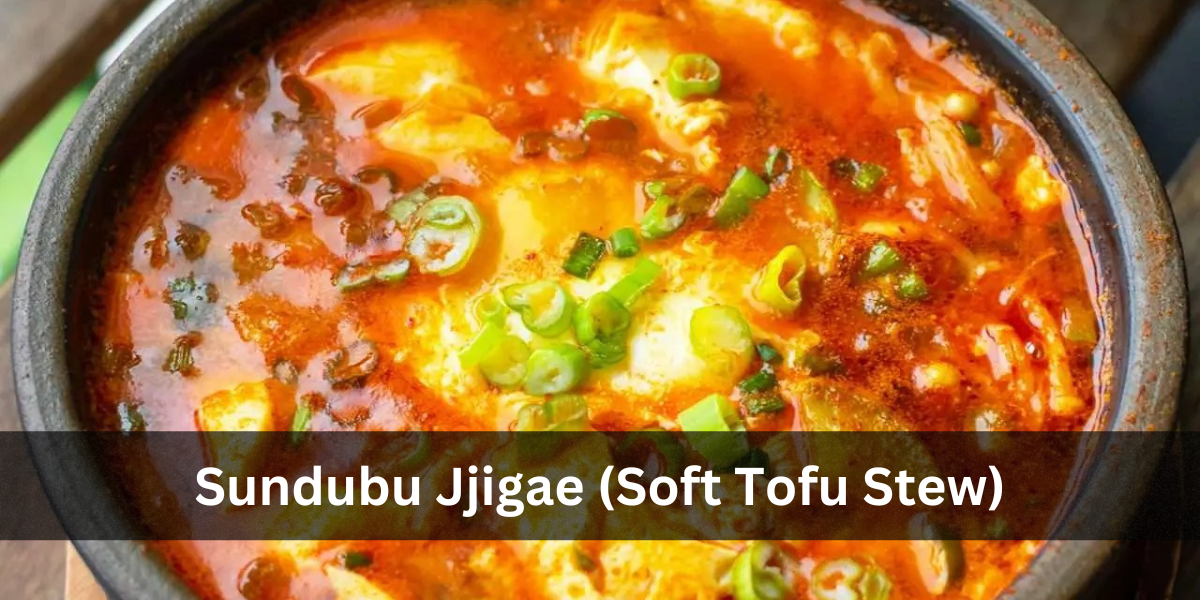Are there any Korean tofu houses in your vicinity that are specialized in the preparation of sundubu jjigae (순두부찌개)? Restaurants typically provide a menu that includes a number of different options, such as fish, meat, vegetables, combinations, and so on. Which of these permutations is your favorite?

The ripe kimchi and finely sliced beef are the two ingredients that go into making this sundubu (or soondubu) jjigae recipe. Please give it a shot at home. When you find out how simple and quick it is to prepare this hearty stew that is full of flavor, you will be pleasantly delighted.
For more variations, you can try Haemul sundubu jjigae, which is a seafood soft tofu stew, as well as Deulkkae sundubu jjigae, which is a soft tofu stew with perilla seeds and is vegan.
The tofu
The tofu known as Sundubu (or s00ndubu) is a type of tofu that is not pressed, which results in it having a high water content and a texture that is very delicate and velvety. I usually make sure to keep a package or two in the refrigerator, and if I find myself in need of a quick way to prepare something warm and comfortable, I whip up this pot of savory stew that is boiling away.
Other ingredients for sundubu jjigae
This recipe combines kimchi and pork, a classic match. Feel free to use beef, chicken, or seafood and switch out the pork. For best results, always use fully fermented kimchi to cook with.
- ⅓ cup thinly sliced kimchi
- 3 ounces pork or beef
- 1 scallion, finely chopped
- 1 egg – optional

Mushrooms are a good substitute if you don’t like meat. If you start with vegan kimchi, you can even make the stew vegan.
Sundubu Jjigae
For the soup base, I like to use anchovy broth, but water is totally fine.
- 1 to 3 teaspoons gochugaru (Korean red chili pepper flakes)
- 1 tablespoon sesame oil
- 1 cup water or anchovy broth
- 2 to 3 tablespoons juice from kimchi, if available
- 1/2 teaspoon saeujeot (salted shrimp) or salt to taste
- pinch black pepper
If you have some salted shrimp (saeujeot, 새우젓) leftover from making kimchi, use a little to season the stew instead of using salt. It really enhances the flavor of the stew. My secret ingredient!
